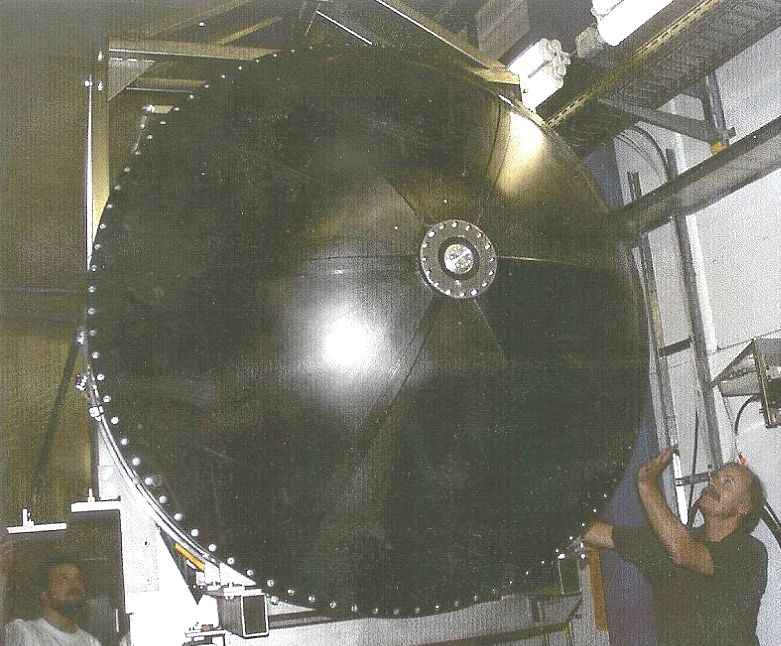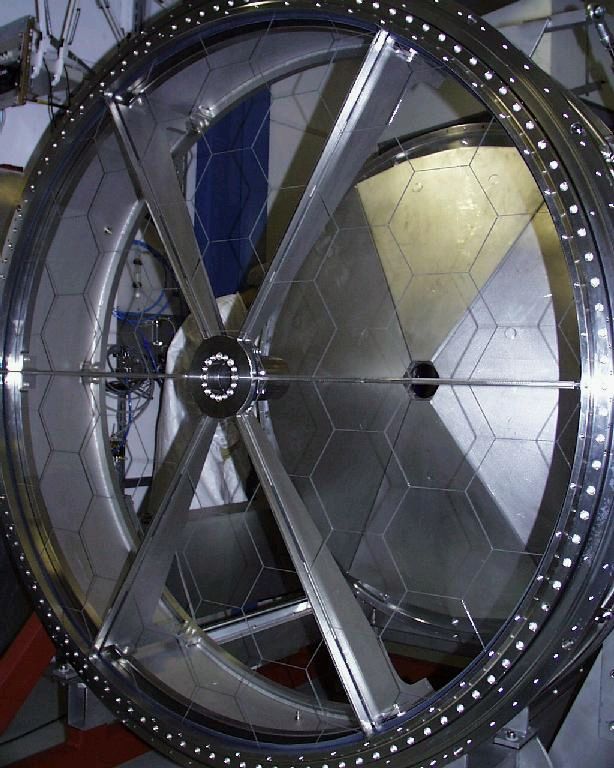The Ring Imaging Cherenkov (RICH) detector is a device for electron (e+/e-) identification in hadron and heavy ion-induced nuclear reactions investigated with HADES.
The detector works using Cherenkov radiation emitted from particles travelling with a velocity larger than that of light in the given medium.
In the GSI SIS-18 energy regime electrons and positrons emitted in nuclear collisions have velocities ß=v/c~1, while all hadrons have ß<0.95. Hence, the Cherenkov effect can be used to discriminate electrons from hadrons. With C4H10 as radiator gas the HADES RICH is even hadron blind for momenta up to approximately 2 GeV/c.
Produced Cherenkov photons are reflected and focused using a spherical mirror producing rings on a photon detection plane.
In 2019, the HADES RICH underwent an upgrade in the scope of the FAIR Phase-0 measurement campaign. Now using 428 state-of-the-art Multi-Anode-PhotoMultiplierTubes (MAPMTs) for photon detection and an upgraded read-out electronic scheme based on the DiRICH readout developed at GSI EEL.
In a total of state-of-the-art27392 MAPMT channels, arranged on a staggered photon detection plane, the hit arrival time, down to sub-nanosecond precision, and time over threshold are recorded for each Cherenkov photon.
Participating Institutions
Technische Universität München, Germany
RICH design and construction
Bergische Universität Wuppertal, Germany
RICH photon detector construction, calibration, slow control, analysis
Justus-Liebig-Universität Gießen, Germany
RICH photon detector construction, slow control, analysis
GSI Helmholtzzentrum für Schwerionenforschung, Germany
Multi-Anode-PhotoMultiplierTubes (MAPMT)
Related HADES Photo Gallery collections
| June 2000 | Setup Details |
| Aug 2000 | Mainframe, Shower, Tof, Tofino & Rich |
| Sept 6, 1999 | RICH Mounting |
Photo Gallery
 |  |
